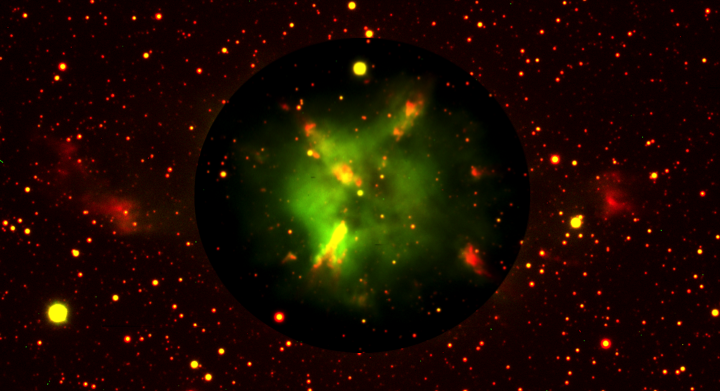Dr. Hillwig Awarded $217,400 NSF Grant
In Fall 2021, Dr. Hillwig was awarded a 3-year NSF grant to support his investigations into double white dwarf systems. This grant will provide funds for summer research students as well as travel to conferences and telescopes. See below for as description of the project, or see the Valpo press release.
Understanding Close White Dwarf Binaries Using Planetary Nebula Central Stars
When some stars die, they shed their outer layers and become vibrant planetary nebulae as the material dissipates out into space and is illuminated by the central star, which has now become a white dwarf. Many of these nebulae have unexpectedly complex shapes. Close inspection of the central stars in these nebulae has revealed that at least some fraction of them are actually binary white dwarf stars that orbit very closely together, interacting with each other in several ways. These interactions may have broad implications for models of stellar evolution and even cosmology, as these double white dwarf star systems may trigger the type of supernovae used to map the expansion of the universe. However, the current sample of double white dwarf systems within the planetary nebula stage is meager, with only a handful of confirmed systems.
This grant will support observations of double white dwarf prospects, with the aim of increasing our catalog of these potentially key systems so that meaningful statistical analyses can be performed, improving our understanding of stellar evolution, nebular shaping, the rate of close binary mergers, and the rate of supernovae.
This grant will also support the mission of Valparaiso University and the Department of Physics and Astronomy in providing impactful research experiences to undergraduate students so that they are ready for their next steps. In addition, this grant work will be used to continue development of a lab experience for non-science majors taking introductory astronomy, and to support popular-level astronomy talks for the broader student and public community, featuring our on-campus observatory and our remote access to the SARA consortium of telescopes around the world.

Image credit: Gemini South Telescope, Hillwig et al. (in prep.)